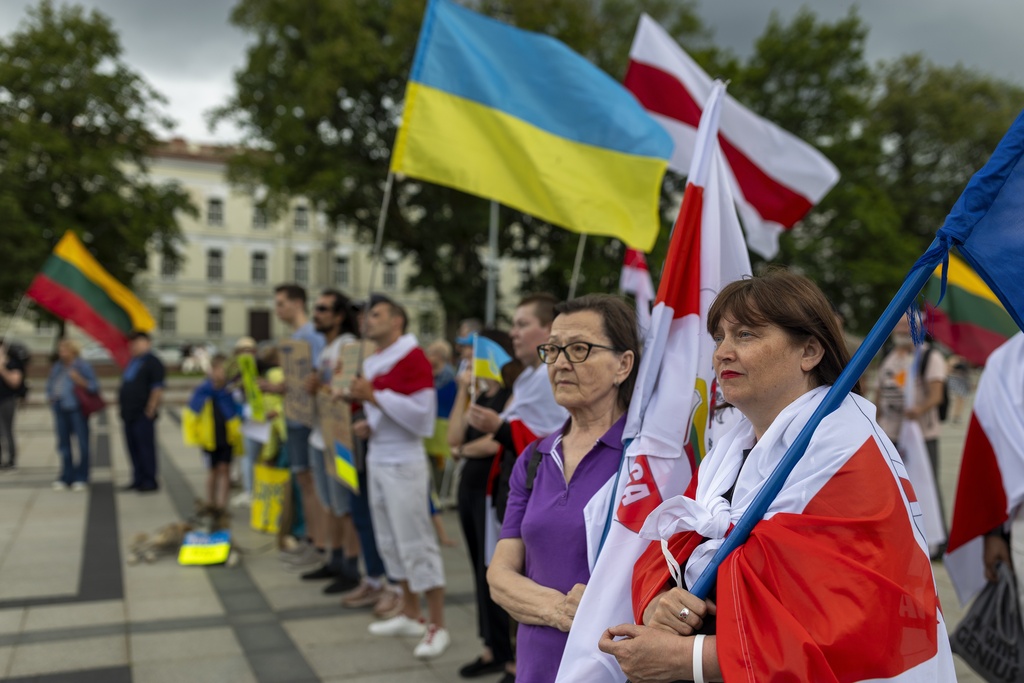The Baltics are Preparing for Defense Against Russia

While the world’s attention drifts, the Kremlin hasn’t forgotten the Baltic States. For Russia, Latvia, Lithuania, and Estonia remain symbolic battlegrounds—and a key front in its ongoing confrontation with the West.
The Baltic states are no longer just preparing for a possible conflict with Russia – they are building a new strategic architecture for regional defense, taking into account all the horrors that the war in Ukraine has brought.
Baltic Military Strategy: from Deterrence to Readiness
Since 2022, Estonia, Latvia, and Lithuania have radically revised their military strategy. The main principle is not to wait. Military commanders no longer rely on the Alliance's slow response or static presence. Separate national defense programs are being developed, focusing on immediate response, asymmetric deterrence, and rapid mobilization.
For example, Estonia announced an increase in the defense budget to 5.4% of GDP, launched artillery modernization, strengthened its borders with Russia, and built dozens of new facilities for the mobilization reserve. Lithuania reintroduced compulsory military service, and Latvia created a new territorial defense corps. All three countries are purchasing HIMARS, NASAMS, drones, developing cyber forces, and preparing for a scenario in which Russian forces can attack not in a hybrid way, but in an open way – quickly, through the Suwalki corridor or the Baltic Sea.
The most radical changes concern infrastructure. A joint system of fortifications is being created along the eastern border, which has already received the unofficial name of the “Baltic Wall.” For the first time since World War II, the states of the region are building fortifications on peaceful territory.This is a sign of the times – the world is no longer illusory and safe.
Army Doctrine: Reservists, Drones, and Total Mobilization
Unlike the classical model of defense in Western countries, the Baltic states are deliberately focusing on Israeli and Ukrainian doctrine: the maximum number of trained reservists, an emphasis on digital mobilization, network defense, street fighting in cities, and the use of drones not only at the front but also behind enemy lines. Civilian training for combat is particularly active: shooting courses, medical training, and training of volunteer units. In Vilnius and Tallinn, politicians are already openly talking about the concept of “total defense” – when the country is defended not only by the army but also by society.
All three countries have intensified military cooperation with Poland, Finland, and Sweden, forming a nexus of joint logistics, command, and intelligence sharing. The deployment of NATO troops, in particular the German contingent in Lithuania, is no longer seen as a temporary solution, but as a permanent deployment. The Baltics aim to create a front line of the Alliance, where every square kilometer should have a map of the shelling, an evacuation plan, and reserve forces.
Finland's Effect: the Northern Flank Becomes Key
Finland's accession to NATO came as a strategic shock to Moscow. The Alliance now controls most of the land border with Russia in the north. And this has changed all the Kremlin's calculations. Finland instantly integrated its military infrastructure into NATO's common system, and the Baltic states gained a reliable rear partner. From now on, the region's defense plan is based on joint logistics through the northern corridor, the rapid deployment of equipment and combat teams through Lapland to the Baltic Sea.
Kaliningrad is of particular concern. The Russian enclave increasingly looks like an isolated island in a hostile sea. Its military importance is great, but its logistical support is weak. If the war reaches the Baltics, Kaliningrad will either become a target or a powerless base. In any case, it is vulnerable. This increases tension in the Kremlin, forcing Russia to keep thousands of troops on standby on its western flank.
The Role of Ukraine: an Experience that Cannot Be Ignored
Ukraine has become not only a source of sympathy or geopolitical resonance, but also a source of military lessons. The Baltic defense ministries openly admit that they are adapting the Ukrainian experience: from mining to the use of FPV drones, from building a shelter system to digital interaction between the army and civilians. They are studying mobilization algorithms, logistics coordination mechanisms, the experience of decentralizing combat decisions, and the principles of drone schools.
In addition, the Baltic states are one of Ukraine's most active political lobbyists in the EU and NATO. This symbiosis is not accidental. They understand that as long as Ukraine holds the frontline, the Baltics will have time to prepare. But if the West makes a fatal mistake and allows Russia to win, Latvia will be next, and then there will be neither time nor space.
The Baltic States Are a Test for NATO, a Mirror of Europe, and a Warning to All
The Baltic states are not under any illusions. They do not rely exclusively on diplomacy, do not believe in deterrence through sanctions, and do not wait for mercy from time to time. Their example is not paranoia. It is a realistic view of the new Europe: A Europe of fortifications, contractors, mobilization plans, and alliances of survival. And if they are preparing for defense today, it is not because they want a war, but because they have seen what happens when you are not ready for it.
Ukraine has shown how a modern state fights for its future. The Baltic states are the next line. And this line does not bend anymore.
Bohdan Popov, Head of Digital at the United Ukraine Think Tank, communications specialist and public figure